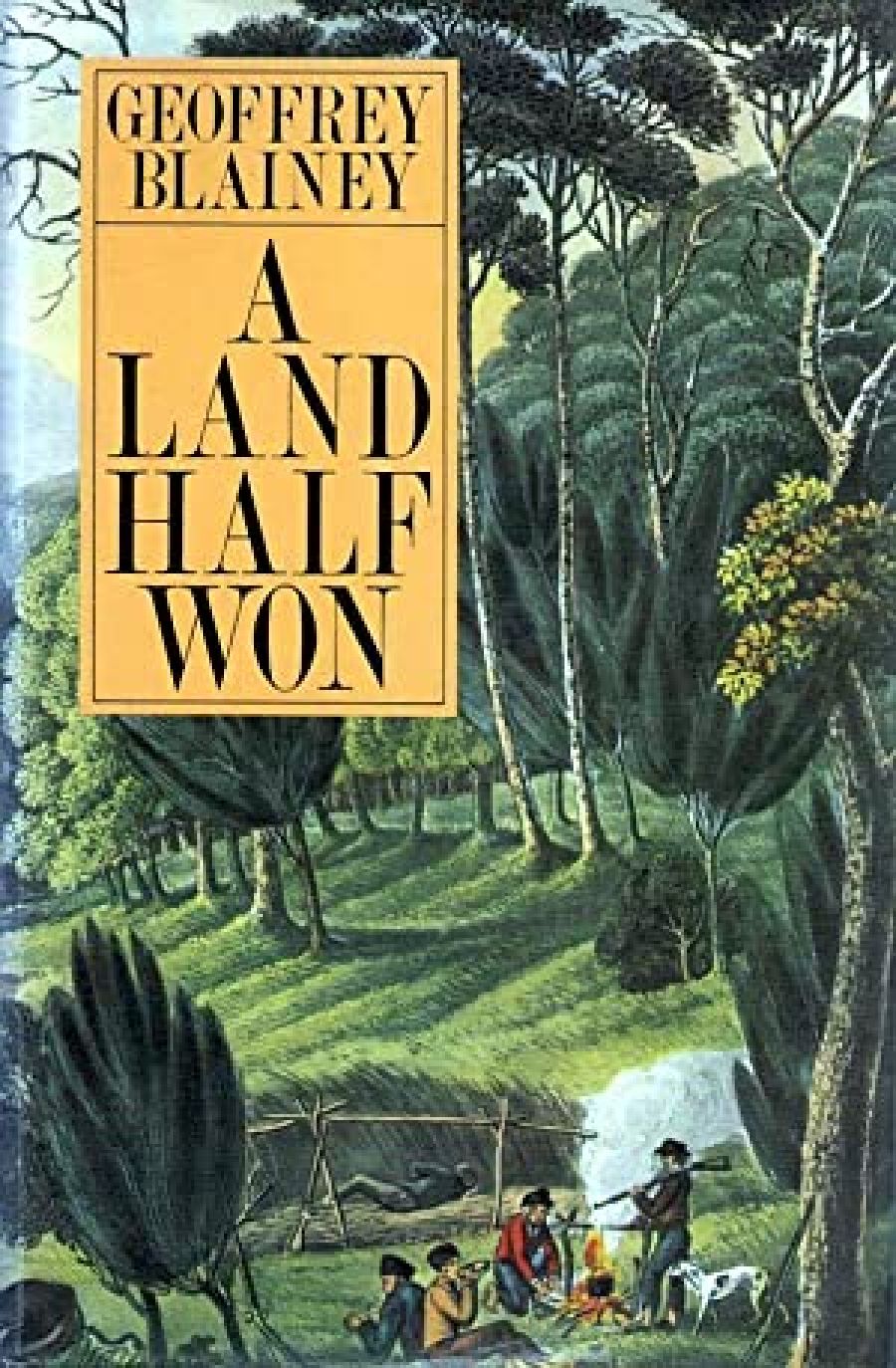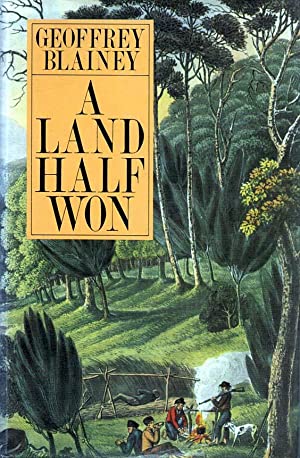
- Free Article: No
- Contents Category: Australian History
- Review Article: Yes
- Article Title: In Dialogue with the Environment
- Online Only: No
- Custom Highlight Text:
Whatever would we do without Geoffrey Blainey? If he did not exist it would certainly be desirable to invent him. Of all our historians perhaps only Manning Clark reaches such a wide audience: but while Clark's epic history is pitched at a prophetic level, Blainey’s various works are, literally, much more down-to-earth affairs. Yet they are full of ideas, new insights and questionings of old orthodoxies.
- Book 1 Title: A Land Half Won
- Book 1 Biblio: MacMillan, $19.95 pb, 361 pp
- Book 1 Cover Small (400 x 600):

- Book 1 Cover (800 x 1200):

It is interesting to compare Blainey’s new work, A Land Half Won. with Clark’s last volume, The Earth Abideth For Ever. The titles all too well sum up the authors' different emphases; yet while they write in different keys, the tunes often seem the same. Nature and the elements are thematically central to both works, and both are pervaded by a brooding sense of alienation.
The first thing that needs to be said about A Land Half Won is that it is a damn good read. Not many historians write as well as Blainey does: certainly none writes in prose so accessible and clear in texture. If at times there is an occasional over-reaching for up-to-date parallels or metaphors (likening, for example, the resonance of ‘systematic colonisation’ in the 1830s to that of ‘the four modernizations’ in China today) one is inclined to forgive – one does, after all, want to read on.
Although it is never precisely stated what kind of book A Land Half Won is intended to be (the dust jacket merely tells us that it ‘covers the second phase of Australia's history’, taking up where Triumph of The Nomads left off) it is soon apparent that this is a history of men (and occasionally women) in dialogue with their environment. Some of the themes discussed – black-white relations, land settlement, flora and fauna, buildings, technology, boundaries and so on – are familiar enough, but Blainey always invests them with new interest. And overriding these various themes is Blainey’s latest discovery – the weather. Climate, of course, has always been there, implicit in many interpretations of Australian history, but in A Land Half Won Blainey promotes it to an almost symbolic level. The story opens with Cook and Banks casually misinterpreting the soil and climate of Botany Bay, and thereby almost dooming Phillip’s mission. (Blainey actually suggests, with a typical Blaineyesque inversion, that future historians may be more concerned with deciding why Botany Bay was not abandoned, rather than why it was originally settled.) It ends with the long drought of 1895-1903 which exposed not only the Europeans’ ignorance of the Australian climate, but their uneasiness with the whole environment. ‘The continent had to be discovered emotionally.’ It was, in this sense, a land only half won.
There is, in fact, very little about emotion or ideology in this book: it is, if in the best sense, a materialist history. There are some fascinating biographical sketches, which often introduce characters off the well-beaten track – such as W. H. Groom, member of the first Federal Parliament who came to Australia as a thirteen year old convict, or the moody poet stockman Barcroft Boake, or the dedicated amateur botanist and zoologist, Ronald Gunn. These sketches are often illuminating in both their material details and in their probing of occupation and ethos. A survey of the political leaders of 1880 gives rise to the wittily apt observation that ‘they were statesmen at breakfast and shopkeepers by mid-morning’. But Blainey is very rarely concerned with personal relationships. His account of Parkes, for example, provokes some splendid sparks, but what seems to chiefly interest him is the man’s flair for bankruptcy.
This lack of interest in personal relationships helps explain the relative absence of women from A Land Half Won. An excellent little chapter on nineteenth century feminists, with Catherine Spence as the centre piece, seems to reflect an awareness of this gap, but what is missing is any sustained discussion of the emergence of the Australian family, particularly in terms of Blainey’s environmental theme.
A Land Half Won covers more than a century of our history in some 360 pages (printed in nice large type), and therefore inevitable criticisms in terms of emphasis and omission should not be pressed too far. It is aimed at the general reader, but Professor Blainey is never patronising. Indeed the reader is invited to join in some of the problems of historical analysis. (On one occasion this leads to a rather extraordinary exercise in ‘Events Which Might Have Happened’ if a colony of North Queensland had been established.) The atmosphere Blainey creates is that of the knowledgeable enthusiast who needs to impart his fascination with the strangeness of this land (‘curiously’ is one of his favourite words) to the receptive reader. A Land Half Won is a credit to popular history.


Comments powered by CComment